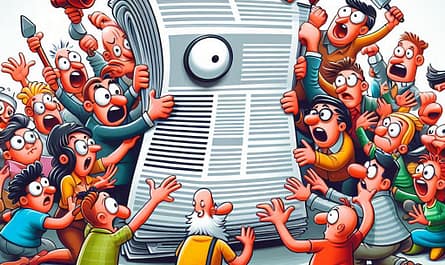
What Is Article Writing?
Article writing is a form of written communication that presents factual, persuasive, or narrative information to readers in a structured format. It’s widely used in newspapers, magazines, blogs, websites, and academic platforms to share ideas, spread awareness, provide suggestions, and influence public opinion. A well-crafted article not only informs but also engages and resonates with its audience.
Purpose of Article Writing
The objective behind writing an article can vary based on the target audience, platform, and context. However, most articles aim to achieve one or more of the following purposes:
- Inform – Share knowledge on specific topics, such as current affairs, scientific discoveries, or historical events.
- Advise – Offer helpful tips, guidance, and suggestions to readers.
- Persuade – Convince readers to form an opinion, take action, or reconsider their beliefs.
- Raise Awareness – Highlight important causes, social issues, or lesser-known subjects.
- Engage and Entertain – Use storytelling to captivate readers with real-life stories, personal reflections, or humorous content.
Articles often feature diverse themes like:
- Technology developments
- Human interest stories
- Travel experiences
- Lifestyle trends
- Opinion pieces on societal issues
Essential Elements of Article Writing
Writing an effective article involves incorporating several essential components:
1. A Catchy Title
- Short, relevant, and attention-grabbing.
- Gives a clear idea of the article’s topic.
2. Author’s Name
- Positioned below the title.
- Builds credibility and adds a personal touch.
3. Introduction
- The opening paragraph must hook the reader.
- Can start with a question, statistic, anecdote, or strong statement.
- Sets the tone and introduces the main theme.
4. Body Paragraphs (2–3 paragraphs)
- Provides detailed information, facts, opinions, or analysis.
- Maintain a logical flow and coherence.
- Each paragraph may cover a different aspect of the topic.
- Use examples, data, or narratives to support the main idea.
5. Conclusion
- The closing paragraph that wraps up the article.
- Summarizes the key points and may include:
- Personal opinion
- Recommendation or advice
- Prediction or call to action
- A counterpoint or reflective question
Format of an Article
Title: (Catchy, Informative, and Short)
By: (Author’s Name)
Introduction: Engage the reader and introduce the topic.
Body Paragraphs: Provide information, arguments, evidence, or stories.
Conclusion: Sum up and leave the reader with final thoughts or action points.
Points to Consider When Writing an Article
To make your article more effective and impactful, keep the following in mind:
- Choose a unique and relevant topic.
- Identify your main goal – Are you informing, persuading, advising, or entertaining?
- Know your audience – Tailor your tone, vocabulary, and content to their expectations and reading level.
- Keep the title and headings short, clear, and impactful.
- Make your introduction compelling.
- Use interrogative openers (What if…? How can…? Why should…?).
- Ensure readability – Use simple, clear language.
- Avoid repetition and over-explaining.
- Use well-structured paragraphs – Each paragraph should have a main point and supporting details.
- Avoid writing only for personal interest – Content must be meaningful to the general audience.
- End with a logical and relevant conclusion.
Do’s and Don’ts in Article Writing
To better understand what works and what doesn’t, let’s classify common practices into two categories:
✅ Do’s
- Add the author’s name below the title.
- Keep titles short, clear, and informative.
- Make the introduction and conclusion attention-grabbing.
- Specifically address your target audience.
- Provide solutions, advice, or suggestions in the body paragraphs.
- Use correct punctuation and grammar.
- Write in three structured paragraphs: introduction, body, and conclusion.
- Tailor your language and tone based on the audience and topic.
❌ Don’ts
- Avoid writing very long articles that may overwhelm readers.
- Don’t make titles unnecessarily long or confusing.
- Avoid focusing only on the intro and conclusion; every section should be engaging.
- Don’t use informal or irrelevant abbreviations or invent your own writing style without purpose.
- Never include points of personal interest that do not connect with readers.
- Avoid excessive logic and repetition that disrupt flow.
Conclusion
Article writing is both an art and a discipline. With the right structure, clear purpose, and audience-focused content, your writing can leave a lasting impression. By practicing regularly and keeping these best practices in mind, you’ll not only improve your writing speed and quality but also your ability to connect with and influence your readers.
Remember: a well-written article doesn’t just speak—it engages, informs, and inspires.


